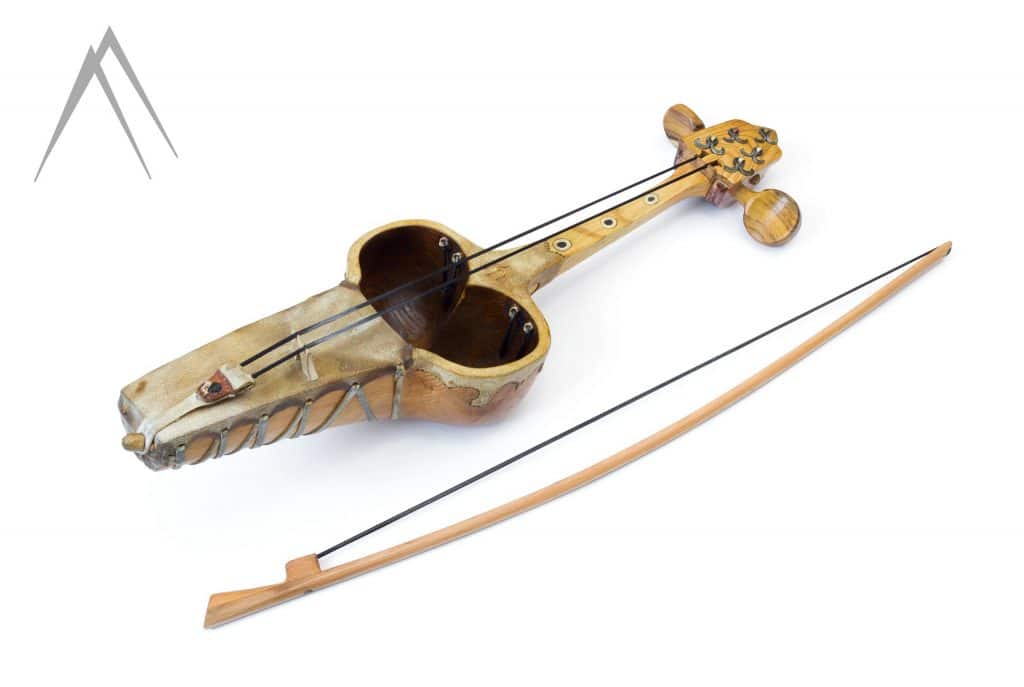Kazakh Musical Instruments
Kazakh Instruments
Dombra
Dombra is the most well-known national musical instrument of Kazakhs and a cultural symbol of the country with a long tradition. This traditional stringed instrument is found in the culture of Turkic peoples and is particularly recognized as a folk instrument of the Kazakhs.
Dombra serves as both a solo and accompanying instrument in Kazakh folk music and is also used by contemporary musicians. It is one of the oldest musical instruments in the world, with its earliest cave paintings dating back 4,000 years to the Neolithic period. Dombra is a two-stringed plucked instrument that has a pear-shaped body with a long neck and is made from materials such as pine, maple, hazel, and oak.
Similar instruments exist in many cultures. Historical records from Eurasia indicate that the dombra and its related instruments have been known for centuries. Kazakhstan has a Dombra Day which is celebrated on the first Sunday of July.
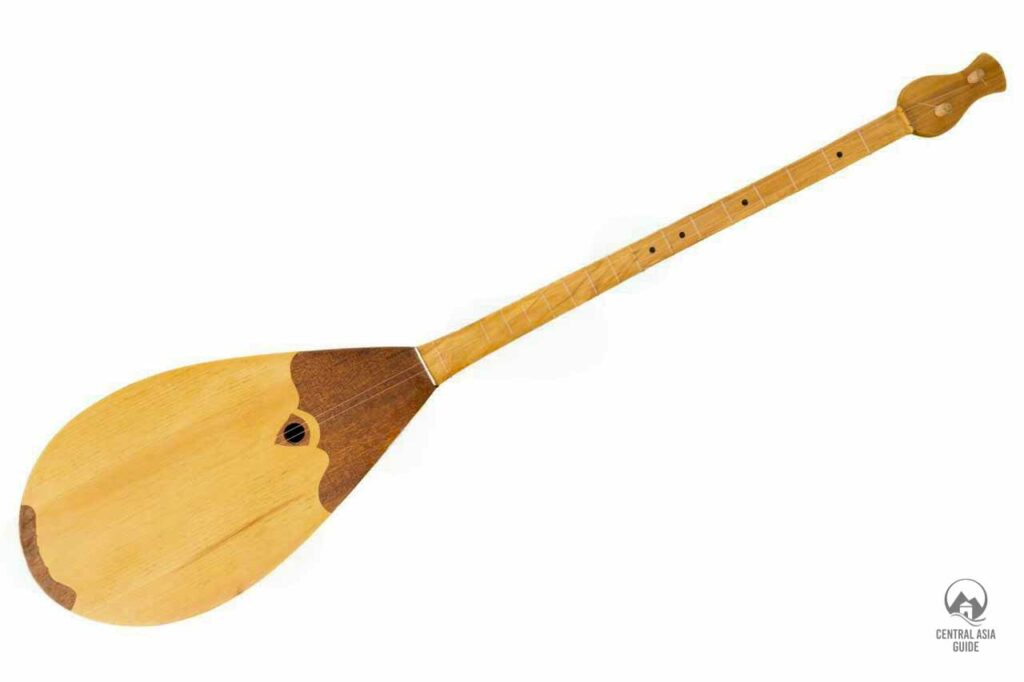
Sherter
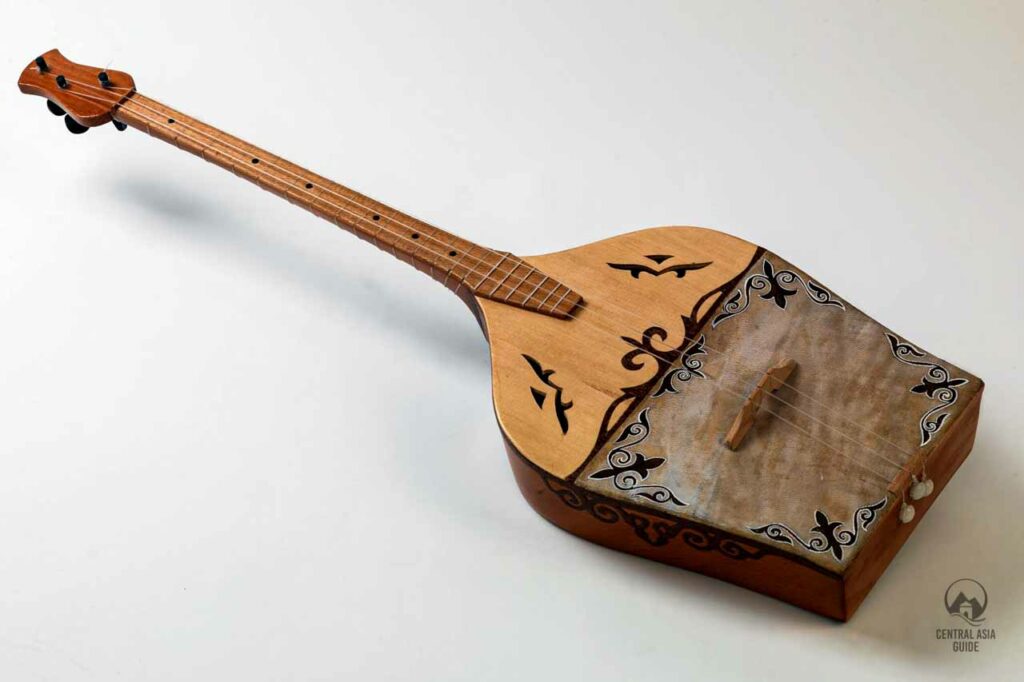
The sherter is an ancient Kazakh stringed instrument with origins in Turkic culture. It is played similarly to the dombra but is smaller, featuring a short neck without frets and a more resonant sound.
Sherter resembles the kobyz, as it is also carved from a single piece of wood and has a curved shape. Its body is covered with leather, and it has two horsehair strings.
Asatayak
Asatayak is an ancient percussion instrument of the Kazakh and Turkic peoples. It consists of a rod or stick with a flat head, often decorated with ornaments, metal rings, and pendants.
The instrument produces a sharp, resonant sound. To amplify its sound, baks (spiritual figures) attached bells called konyrau to its head, creating a metallic resonance when shaken.
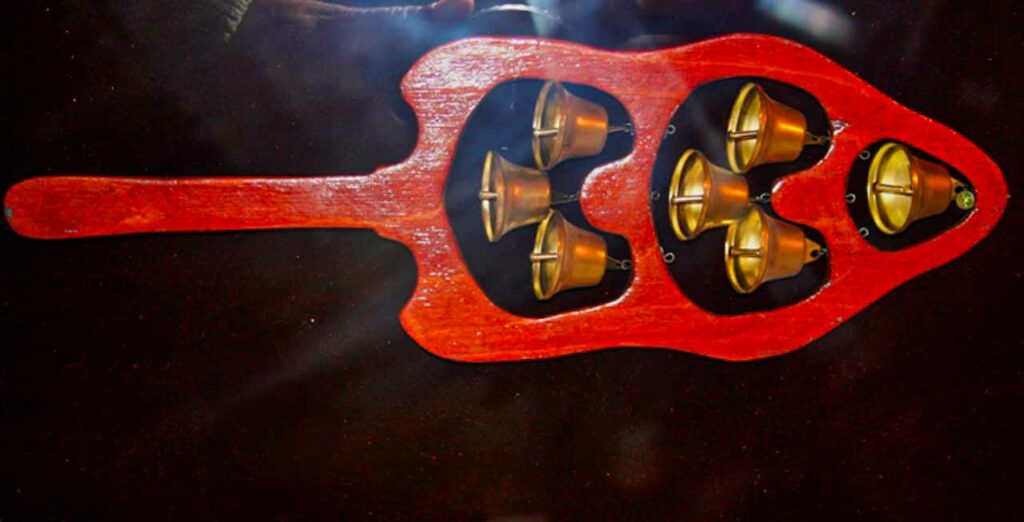
Zhetygen
Zhetygen is a Kazakh folk plucked instrument with seven strings and a rectangular shape, made of wood. This musical instrument looks like a harp with horsehair strings.
Zhetygen’s surface is covered with a thin plate. In ancient times were used seven asyks (sheep’s heel bone) thanks to which the sound was extracted from the instrument. Over time, Zhetygen was reconstructed following the modern requirements. The formerly seven-stringed musical instrument today has a range of 2.5 octaves. Now the instrument is widely used in Kazakh orchestral ensembles.
There is a legend among the locals, about the seven strings of the instruments. It tells that the father lost his seven sons and he poured out his grief, singing memorial songs. Starting kyuis and remembering each one, he pulled one string. (In the picture Zhetygen is haging in the centre).
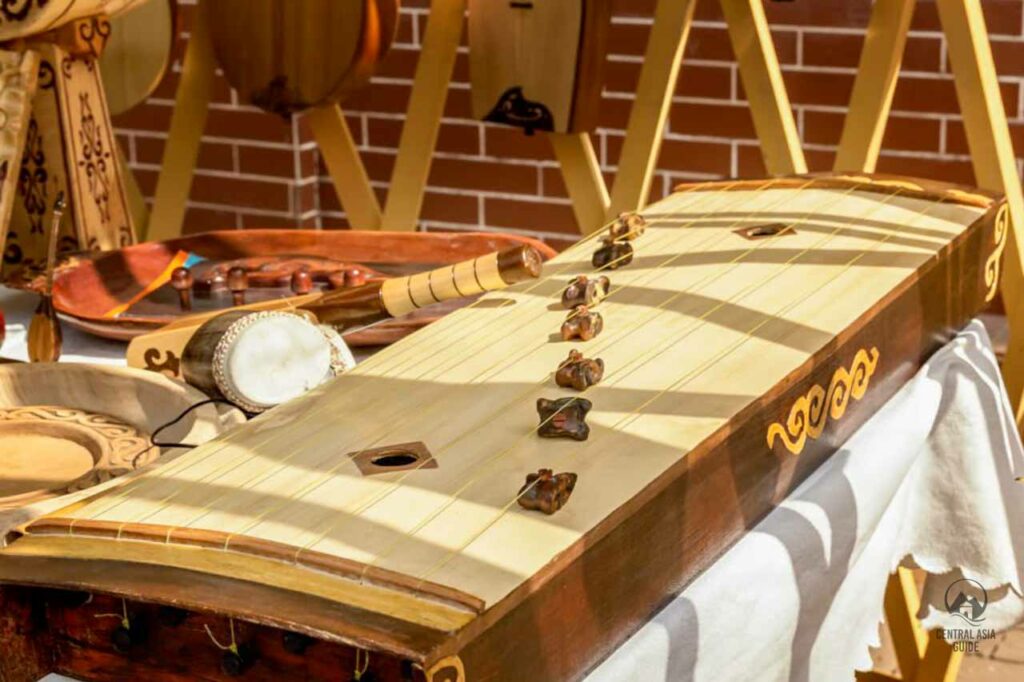
Dabyl

The dabyl is a traditional Kazakh percussion instrument resembling a kettledrum. It has a circular frame with a handle and is covered with leather on both sides.
Some versions of the dabyl feature a copper frame shaped like a helmet. Its loud sound made it useful for military signalling, such as attack calls.
In old times, Kazakhs commonly used percussion instruments like the dabyl, dauylpaz, and shyndauyl for hunting, religious ceremonies, and announcing upcoming movements.
Kobyz
Kobyz is a bowed instrument with two strings, made of wood in the form of an open bowl extended downwards. The kobyz is covered with leather from below. The strings are made from horsehair. Today Kobyz is used by musicians in ensembles and orchestras of Kazakh folk instruments.
There few legends about Kobyz. It states that this instrument was created by the great storyteller of the steppes Korkyt-Ata, who lived in the 10th century and the tool is charged with magical and even mystical properties as well as it sounds like animal voices. Additionally, Kazakhstani believes that the spirits of their ancestors spoke to them through this music.
